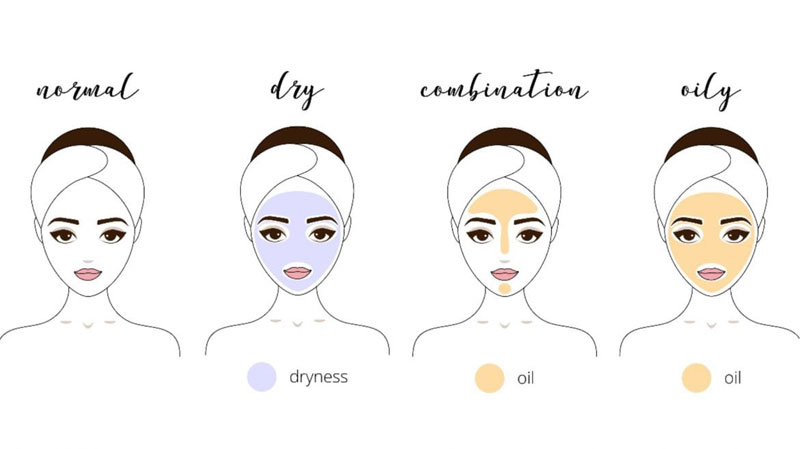Does your skin need some taming? Trying to get a handle on what skin care routine will work best for you? It’s important to know what you’re working with! Determine your skin type and then make sure to follow that skin type’s instructions to get your own best skin!
Figuring Out Skin Type
Once you know what type of skin you’ve got, you’re better equipped to deal with it! One way to determine your skin type is a 30-minute skin test. To do this you need to:
- Thoroughly wash your face, removing any previous products.
- Wait 30 minutes without putting any other products on your skin.
- Then, examine your skin in a mirror. Here’s what you’re looking for:
- Oily Skin: Skin looks shiny, may feel slick to the touch
- Dry Skin: Skin has dry, flakey areas and may feel tight
- Sensitive Skin: Skin looks red and irritated, may be painful to the touch
- Combination Skin: Skin has a combination of both oily and flakey areas
If you’re having trouble distinguishing your skin type, our experts can help. Schedule an appointment today.
Oily Skin
A common misconception is that oily skin only happens during a teenager’s hormonal changes. However, oily skin can appear at any age and is often genetic. Oily skin, accumulates layers of dead skin, so exfoliation is important. Treatments like chemical peels can remove this dead skin effectively, ultimately decreasing the oil production you see on your skin. It’s also important to use light products made of gel or liquid formulas. Heavy creams and lotions will likely clog your pores, causing your skin to become even oilier. Additionally, since oily skin is prone to breakouts, we suggest looking for products labeled as non-comedogenic. Non-comedogenic products will be less likely to clog your pores or cause acne. But oily skin doesn’t mean you should skimp on moisturizers as oily skin is often the result of your skin reacting to a lack of moisture. Skin often tries to compensate for the lack of moisture, which leads to overproduction of oil.
Dry skin
Ow, dry skin can hurt, ranging from itching and flaking to burning and cracking. Hydration is essential to combating this dryness, including using moisturizers, a humidifier, and making drinking water a priority. Also, stop scrubbing! Instead, pat or gently rub your skin to avoid irritation. If you don’t see these practices having an effect, it doesn’t hurt to schedule an appointment with a dermatologist and see if there are any underlying medical conditions causing your dry skin.
Sensitive skin
Sensitive skin may feel painful or tight and is commonly associated with redness or other signs of irritation. Products, water, and environmental factors easily irritate sensitive skin, making it a frustrating condition to live with. If you have sensitive skin, your skin is likely to react to many ingredients and common irritants. Because of this, it’s important to look for products with as few ingredients as possible. This lessens the chance that you’ll experience a reaction, and even if do experience a reaction, you’ll be able to easily identify the ingredient responsible.
Combination skin
Combination skin encompasses a bit of everything, dry, oily and sensitive. Because of this, there’s no one size fits all remedy. It’s important to find the perfect balance between hydrating your dry spots and mattifying your oily spots. In most instances, we’ll recommend “dividing and conquering.” Or, in other words, caring for different parts of your face with different products. For example, you may apply a heavier moisturizer to your cheeks, while simultaneously applying mattifying serums and acne fighting ingredients to your oily T-zone.
Toxbar-KY, Northern Kentucky’s Neurotoxin, Dermal Filler, and Microneedling experts, encourage all customers and clients to learn more about their skin, so they can give it the TLC it needs. We’re here to help answer any questions you may have about your skin and it’s proper care. Offering a wide range of solutions to your skin care conundrums, Toxbar-KY works with each client to create a care plan that will help meet your specific skin care goals.
Original Source Content: Arizona Dermatology https://arizonaderm.com/how-to-determine-your-skin-type/

